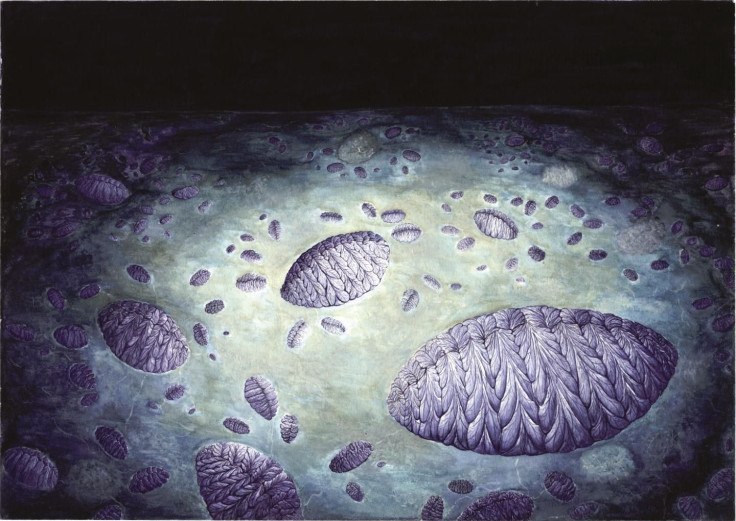Rangeomorphs Yield Earliest Evidence Of Reproduction In A Complex Organism

A study of fossils of ancient animals -- the rangeomorphs -- has yielded the first evidence of reproduction in a complex organism. The research, published Monday in the journal Nature, was led by a team of scientists from the University of Cambridge.
Rangeomorphs -- strange fern-like organisms that lived nearly 565 million years ago -- are, despite their plant-like appearance, considered the first animals to appear on this planet. These organisms, which thrived in the oceans of the late Ediacaran period, died out much before the appearance of the trilobites -- the most successful and diverse of all early animals.
“Rangeomorphs don’t look like anything else in the fossil record, which is why they’re such a mystery,” lead author Emily Mitchell, a postdoctoral researcher at University of Cambridge, said in a statement. “But we’ve developed a whole new way of looking at them, which has helped us understand them a lot better -- most interestingly, how they reproduced.”
As these creatures were immobile, well-preserved fossils can show their entire ecosystems as they existed 565 million years ago. After studying the fossils of a type of rangeomorph known as “Fractofusus,” which could grow up to 6.5 feet in length, and analyzing the distribution of their population, the researchers found that the rangeomorphs employed a complex, dual mode of reproduction.
According to the study, Fractofusus would first send out an “advance party” composed of larger “grandparent” rangeomorphs -- produced either sexually or asexually. These grandparents would then rapidly produce “parents” and “children” asexually using stolons, or runners -- a mode of reproduction the researchers likened to that of a modern-day strawberry plant.
“Reproduction in this way made rangeomorphs highly successful, since they could both colonize new areas and rapidly spread once they got there,” Mitchell said in the statement. “The capacity of these organisms to switch between two distinct modes of reproduction shows just how sophisticated their underlying biology was, which is remarkable at a point in time when most other forms of life were incredibly simple.”
However, while the rangeomorphs flourished in the late Ediacaran period, they disappeared entirely about 540 million years ago -- just before the start of the Cambrian “explosion” that ushered in a vast diversity of life on Earth.
© Copyright IBTimes 2024. All rights reserved.






















